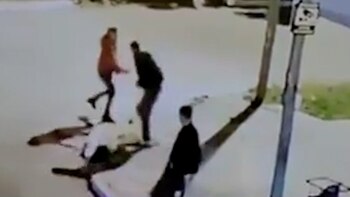
Until December 9, 2031, the Victims Act will be in force, which entered into force in 2011 and which establishes the measures of care, assistance and comprehensive reparation for victims of the armed conflict in Colombia. This law is implemented gradually and progressively during the years envisaged for its validity. This means that victims will access programs in stages according to their degree of vulnerability.
One such process of comprehensive reparation is land restitution, regulated by articles 71 to 122 of the Victims Act. Persons who may accede to this right are those who “individually or collectively have suffered harm by acts that occurred after 1 January 1985, as a result of breaches of International Humanitarian Law or serious and gross violations of international human rights law, which occurred with occasion of the internal armed conflict”.
Less than nine years before it expires, the law would not be meeting its objectives. In the book, “Insurmountable Barriers?” of the research center for legal and social studies, Dejusticia, presents an analysis of the administrative stage of the land restitution process.
Among the findings presented in the document, it is explained how the restitution implementation strategy has been characterized by a lack of transparency on key issues for understanding the functioning of the policy, as well as the absence in the collection and analysis of information to improve the institutional response and a regulation that restricts user access to the system.
It may interest you: Two leaders of land restitution murdered in northern Colombia
At the time of enacting this law, the Colombian State set itself the goal of restoring, over a decade, the dispossessed or abandoned land of the more than eight million forcibly displaced by war.
It should be noted that Law 2078 of January 8, 2021, with the signature of President Iván Duque, extended the validity of Law 1448 (Victims Act) for ten years.
Under the calculations of that time, the government projected that the Special Administrative Unit for the Management of the Restitution of Stripped Land (URT), would receive 360,000 land restitution claims. In turn, that some 215,000 cases would be subject to restitution and approximately 85,000 would be compensated.
But more than ten years later, judges and magistrates of the Special Jurisdiction for Land Restitution have issued 6,422 judgments ordering or denying the restitution of 12,130 petitions. This can be read in Dejusticia's book, which was supported by the international research laboratory, Gender Justice and Security Hub.
The researchers argue that far from fulfilling its promises of being different, and offering more access to justice for victims, the land restitution system has denied most applications (65 per cent) at the administrative stage of the process.
Another need that is not met for victims is that applicants do not have an effective remedy to dispute negative sentences. According to the book, “the reasons behind this high rate of denial elude both experts and academics, because there is no information that explains the reasons for the negative decisions.”
Precisely, in the first years of the implementation of the policy, the URT did not systematize the reasons for the refusals of registration to the land register. “The fact that the URT cannot answer central questions such as what are the reasons why there is such a large gap between expectations of restitution and the cases actually intervened, or why most petitions are rejected, has aroused public mistrust”, is one of the conclusions left by the book “Barreras unsurpassed?
KEEP READING:
Últimas Noticias
Debanhi Escobar: they secured the motel where she was found lifeless in a cistern

The oldest person in the world died at the age of 119

Macabre find in CDMX: they left a body bagged and tied in a taxi
The eagles of America will face Manchester City in a duel of legends. Here are the details

Why is it good to bring dogs out to know the world when they are puppies




